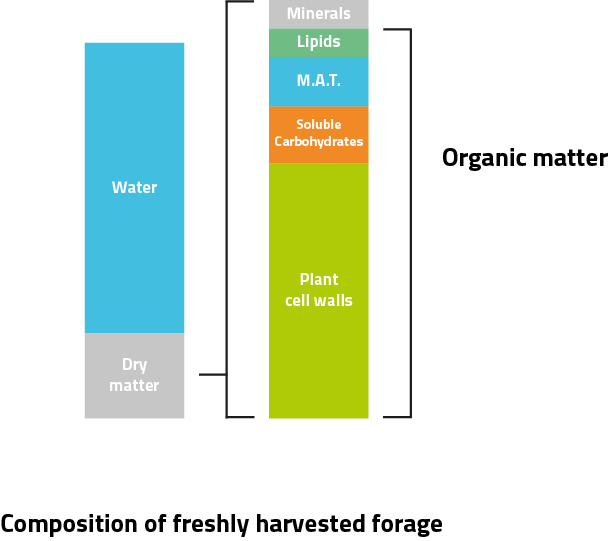Analysis of forage and feed
Optimize the feeding of your animals
Objectives
Determine the nutritional value according to the needs of the animal species concerned.
Provide a balanced ration adapted to the animals.
In order to estimate the amount of concentrate to be added to obtain a balanced ration, it is necessary to know the nutritional value of the forage or forages distributed to the animals. This value is calculated from their chemical composition. For each animal species, equations adapted to the characteristics of the forage (nature, species, vegetation cycle) are used.Nitrogen residues
Targets
- Farmers/Ranchers
- Co-operatives
- Trades
- Chambers of Agriculture
- Veterinary clinic
- Experimental stations
- Seed…
analysis laboratory
The LANO laboratory: equipment and methods of analysis
For accurate forage analysis, it is important to equip yourself with the best tools at the cutting edge of technology. The LANO laboratory has a set of high-performance equipment to guarantee reliable results:
- NIRS infrared analyzer: This modern technology allows to measure quickly and with high precision the chemical composition of forage samples.
- ICP simultaneous double optics: this elemental analysis instrument measures the concentration of different mineral elements .
- Automatic Kjeldhal analyzers: these devices measure the total nitrogen content of feed, a key indicator for assessing the quality of animal feed.
- Van Soest analyzers: specialized in the analysis of dietary fibers, they allow to determine the amounts of raw cellulose, Neutral Detergent Fiber (NDF) and Acid Detergent Fiber (ADF) present in forages. This information is crucial to inform your decisions about feeding your livestock.
- Enzymatic digestors: these equipment allow to simulate digestion in animals in order to evaluate the digestibility of forage and its energy intake.
- Polarimeter: For starch determination
The LANO laboratory also has a LIMS (Laboratory Information Management System), which ensures optimal management and traceability of your samples throughout the various analysis steps.
forage analysis
Why do we need to test feed and forage?
Using a specialized laboratory such as LANO to analyze your forages has many advantages:
- Save on concentrate costs: by knowing the exact chemical composition and nutritional value of your feed, you can adapt your animal feed and reduce the need for concentrated feed, which is often expensive.
- Improve your livestock’s performance and production: by providing a feed adapted to your animals, you promote their health and well-being, which translates into better productivity and higher quality of the products from your livestock.
- Manage your feed stocks: based on the results of analyses and the nutritional value of your different feeds, you can decide which ones to use in priority and better plan the rotation of your stocks.
Preserving the environment: an optimized management of the resources used for feeding your animals allows you to reduce your ecological footprint, both in terms of the quantity of food produced and the greenhouse gases emitted by livestock.
Forage quality
Measured values essential for interpreting forage quality
When analyzing a forage sample, several parameters are measured to assess the quality and nutritional value of the forage. The main elements analysed are:
- Dry matter (DM): this is the percentage weight of the solid portion of the forage, without water. The dry matter content impacts on the conservation of forage and its consumption by animals.
- Total nitrogen: they correspond to the amount of nitrogen present in the forage in protein or non-protein form. The nitrogen level is a good indicator of feed value.
- Total mineral matter: They correspond to the ash content obtained after calcination in a furnace at 550°C. By difference we get the organic matter rate.
- Raw cellulose, Neutral Detergent Fiber (NDF) and Acid Detergent Fiber (ADF): these three measures assess the amount of fibre in feed, which gives an indication of its filling potential and digestibility by animals.
- Pepsin-cellulase enzymatic digestibility: This method uses enzymes that simulate digestion in the rumen
Starch: it is a carbohydrate found in forage plants such as grasses or legumes. It provides a source of energy that is readily available to animals.




